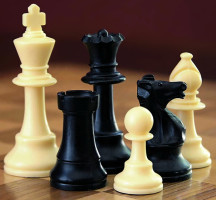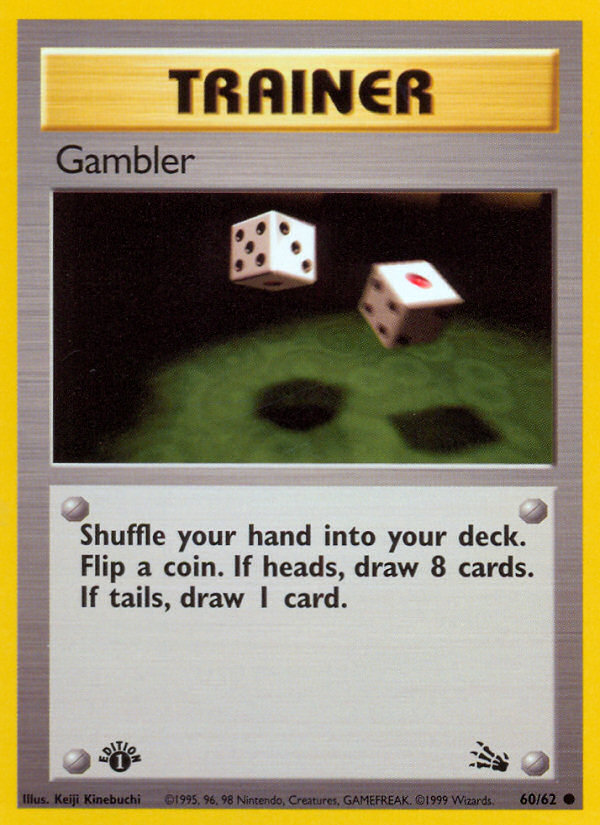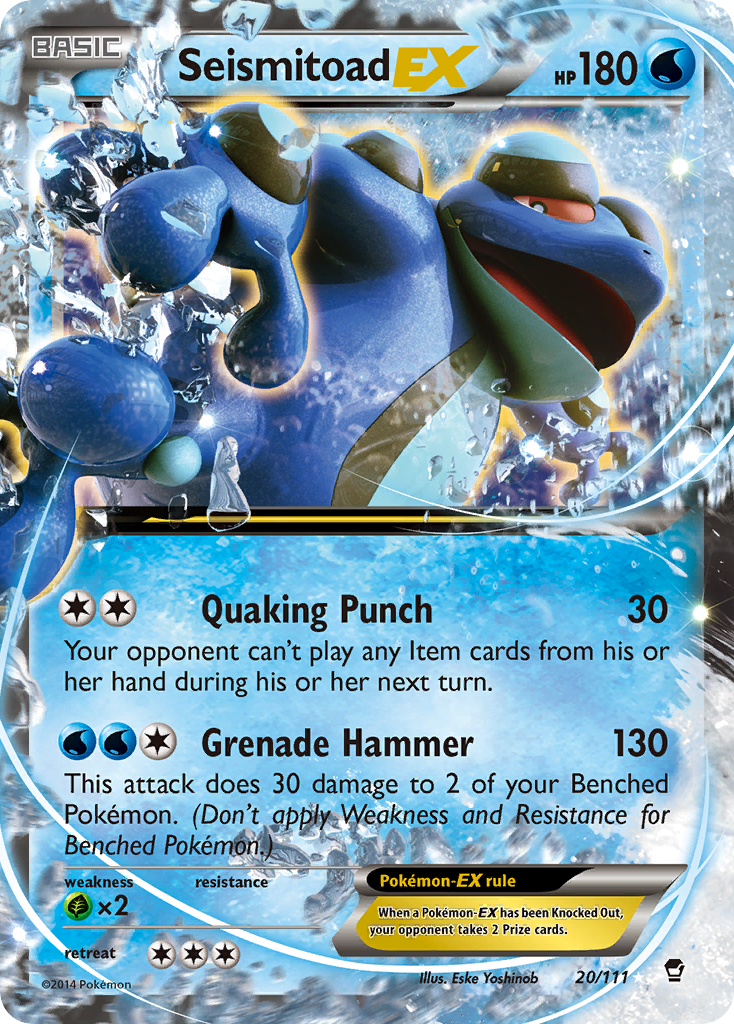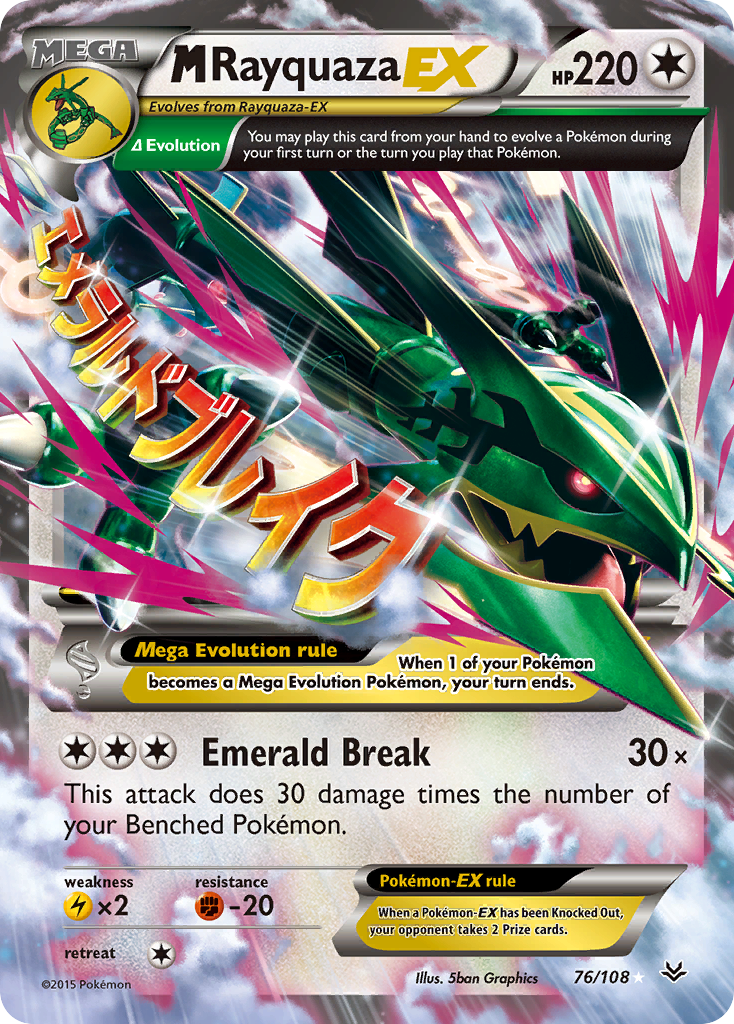When and When Not to Make a Risky Play
Hey PokeBeach! I am happy to be back again for another article and I am really thankful for your guys' support in my previous articles. Recently, I have been doing well in some League Challenges and I ran into a few situations where I either made a risky play or saw one of my friends make one in their game. This got me thinking, and I decided to write an article about these situations and when risky plays should be made. Risky plays are very important because they can either lead you into a tremendous position or end the game, so you have to know when and when not to do them. I am going to go over what risky and safe plays are and then go over the times when you will want to use them. I will try to use specific examples from games that I have actually watched or played in to help make it easier to visualize it yourselves. That's enough with the intro, let's get into the meat of the article.
What is a risky play?
Simply put, a risky play is a play that if everything works out, it will put you in a great position, but if it does not, you will end up in a worse position than you started at. Let's take this example: you have a Manectric-EX on the field and a M Manectric-EX and Professor Juniper in your hand. Ideally you want to get a Manectric Spirit Link on the Manectric EX, Mega Evolve, and attack all in this turn, but obviously you do not have that option with the hand you have. A risky play would be to play the Juniper and go for it all while discarding a Mega Manectric-EX. If you hit it all then you will be in a great position; otherwise you will be down a Mega Manectric-EX and just have a regular Manectric-EX on the field that could be KO'd because it has less HP. This is just one example of what a risky play is and as you can tell it can be tough on deciding whether or not it is worth it.
What is a safe play?
A safe play is the opposite of a risky play. A safe play will usually not put you in an overwhelmingly advantageous position, but at the same time will usually not put you into an overwhelmingly disadvantageous position if it does not work out. To go back to my previous example, the safe play would be to just Mega Evolve and guarantee that your Manectric-EX survives and that you do not lose a M Manectric-EX for no reason. Safe plays are also very important to understand because during a match, safe plays are the majority of the plays that will be made.
When to Make a Risky Play
Now that I have gone over what risky and safe plays are, I am going to go into the situations where risky plays should be made the majority of the time.
Against a Bad Matchup
Whenever you play against a bad matchup things are going to be very tough for you. If the match goes well for both of you, you are going to end up losing because when both of your decks function, your opponent's deck will beat yours. To combat this, you will want to try and take risks during the game to try and get the best board state possible, because if you just make safe plays and advancing the board as usual, you will lose. Depending on how bad the matchup is you can make more or less risky plays. If the matchup is about 45-55 or 40-60 you do not want to make risky play often because there is still a good chance that you will win the matchup without taking extraordinary risks, but if the matchup is something like 20-80 then your only hope is to make the risky play and hope it pays off while your opponent does not draw well.
A good example of a matchup where you would want to take risks in is Night March versus Seismitoad-EX-based decks. The Night March player will need to take risks in the first turn of the game and try to draw as many cards as possible and get as many Night Marchers in the discard as possible so they can OHKO any Seismitoad-EX. You want to take risks because if you miss getting enough Night Marchers in the discard, it will be very difficult to get any more in when the Item lock is on. Also, while Item lock is on, it is very difficult to draw through your deck because a Night March deck is mostly made up of Items. Lastly, if you cannot OHKO a Seismitoad-EX, they can heal their Seismitoad-EX through Super Scoop Up or Max Potion and they can easily run through your attackers, as most of them have low HP. This is just one example of a matchup where one player will want to take risks, but at the same time do not make risky plays for every single play because they could end the game for you early on by putting you in an awful position or cause you to lose through bad draws, which nobody likes.
When You Are About to Lose
At the end of the game when there are only a few plays left that are going to be made, every decision becomes crucial because you have no more room to make up for an error. At this point, you need to make the right decisions to pull the game out in your favor. Because of this, taking risks can either seal you the game or lose you the game. When you are in a losing position, taking risks could be your only option. In many situations you could be losing the game and you have two plays that you could make. One play is safer and will buy you a couple of turns but you will still be in a bad position, while the other play will win you the game if it works or instantly lose you the game on that turn if it does not. In this situation, you will want to do the latter because in either instance you have a chance of losing, but in the first scenario you will lose 100% of the time and all you will do is waste time while in the second you have a chance of winning. Many people will just try to buy more time even though they will inevitably lose because they think they will get another chance later in the game. This will usually not happen because when you are nearing the end of the game, you are low on resources and it will be difficult to turn the game around in those situations.
An example of a scenario where you want to take a risk because you are going to lose happened to me at U.S. Nationals. I was playing a Landorus-EX / Garbodor deck and I was playing against M Rayquaza-EX. At the end of the game I had a Landorus-EX with 150 damage on it and two Energy. My opponent had a fully-powered Rayquaza-EX up that had just hit me for 150. In my hand I had a Max Potion and a Professor Juniper, which gave me two options: I could either discard my hand and go for an Energy to Land's Judgment and KO the Rayquaza to win the game, or use Max Potion and Juniper, which would buy me another turn where my Landorus-EX would not get KO'd. In that situation you should just go for the Energy because even if you get an extra turn, you will not have enough time to build up another Land's Judgment before you get KO'd by the Rayquaza-EX, so you would end up still losing.
In Best-of-Three Sets
Now, I am not saying that in a best-of-three set you should just go crazy and play extra risky. I am saying that in a best-of-three set you can play one game a little more risky because you have a game to fall back on just in case you lose. In best of one, you have no room for error because if you lose that game, you do not get a second chance. But be careful on when you decide to go for the risk in a best-of-three. If you do it too late into game one or two you could run out of time and be unable to complete the set. In best of three, if you decide to take a risk, be prepared to scoop early on just in case the risk does not pay off so you have enough time to finish the series.
When to Make a Safe Play
Now that I have gone over the main situations where you want to take risks, I am going to go over the times where you want to do the opposite and play it safe.
Against a Good Matchup
The times that you want to make a safe play are opposite to when you want to make a risky one. When you play against a good matchup, just like I said earlier, when both of your decks function properly, your deck will win. So when you are up against a good matchup, you want to focus on getting your board position and setting up as usual because once you do, you will win. You do not want to take any unnecessary risks because you do not want to put yourself in a situation where you are left with nothing which will give your opponent a chance to take the game. An example of a good matchup would be Virizion-EX / Genesect-EX against Primal Groudon-EX. The Genesect-EX player clearly has the advantage, as once they get a Genesect-EX powered up, they can just run through Primal Groudon EXs. So in this case the Genesect-EX player will play safe by attaching any Energy to their Virizion-EX on turn one, even if it has to be a Plasma Energy, to guarantee a turn two Emerald Slash. Also, the Genesect-EX player should make sure to power up a couple of Genesect-EXs just in case one gets KO'd.
When you Have Board Control

This is basically another more specific way of saying when you are winning the game. I just want to clarify that you can be up on Prize cards but still be losing because the game is all about who has the better board position. I might get more specific on board control in a different article, but for now just understand that all of your plays should be made to develop your board while hurting your opponent's. While you have a better board than your opponent, you want to maintain that position for the rest of the game. To do this you will almost always want to make the safer play because you do not want to risk severely damaging your board position.
By making safe plays, you will be able to constantly advance your board, forcing your opponent to make risky plays that could backfire. When you are ahead you want to be careful not to over extend and burn too many resources. An example of this could be when your are playing Night March and you are taking a KO each turn. You could at some point have the option to continue digging through your deck, even though you have enough Night Marchers in the discard, and discard valuable cards like Double Colorless Energy and Dimension Valley. In this situation, because you already have everything that you need, there is no need to keep going through your deck and discarding valuable cards.
In Best-of-One Sets
I will just briefly touch on this, as I kind of already explained it earlier in the best-of-three sets. In best-of-one you do not have any games to fall back on. If you lose one game, you lose the round. This means that an instance of bad luck could lose you the game, so you have to try and play safe. This is because you do not want to take a risk and not have it pay off resulting in a loss. This is especially true in best of one over best of three because, again, you do not have any room to spare. I have repeated it a few times, but that is just because it is very important to not create a situation where you lose a round based on luck. Nobody likes losing to bad luck, so if you minimize the times you play risky in a single game format, you can reduce the number of times it happens.
Conclusion
Taking risks and playing safe are fundamentally important to the Pokemon TCG. Knowing when to make the safe or risky play is what sets the great players apart from the average, so it is a very important skill to master. I have given you the main scenarios when you want to play risky or safe with many examples that I have experienced myself multiple times, but there are probably many other cases when you want to play risky or play safe. Please, if you have any additional cases of this, share it in the comments section below. Also, if you have any questions or have a time when you played risky, share them with me because I would love to read them. Thank you guys for taking the time to read my article and thank you for allowing me to have my spot on PokeBeach’s wonderful writing team. I will see you all with my next article.
-Mustafa Tobah




